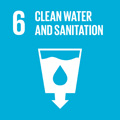- Docente: Francesco Brardinoni
- Credits: 8
- SSD: GEO/04
- Language: Italian
- Teaching Mode: Traditional lectures
- Campus: Bologna
- Corso: First cycle degree programme (L) in Geological Sciences (cod. 8015)
-
from Sep 23, 2024 to Dec 19, 2024
Learning outcomes
Students gain basic knowledge on the mechanisms of weathering, on the geomorphic processes that shape (or shaped) the Earth's surface, and the relevant derived landforms. Specifically, students are able to: - map the main landforms in the landscape and classify them according to the formative geomorphic processes; - perform quantitative field data collection and subsequent data analysis on the morphology, geometry and the surficial materials that compose hillslopes and stream channels; - establish basic causal linkages between hydro-meteorological forcing and geomorphic response; - recognize active and relict landforms in a given setting and put them in the wider context of landscape history; - evaluate the main impacts of (past and current) anthropogenic activities on present geomorphic dynamics.
Course contents
ECTURES:
1. Introduction to Geomorphology; 2. Basics of cartography and the main topographic variables; 3. Feedback mechnisms between climate, tectonics and earth surface processes; 4. Physical weathering; 5. Chemical weathering; 6. Introduction to Hydrology; 7. Hillslope forms and processes (part 1); 8. Hillslope forms and processes (part 2); 9. Fluvial forms and processes (part 1); 10. Fluvial forms and processes (part 2); 11. Glacial forms and processes (part 1); 12: Glacial forms and processes (part 2). 13. Permaforst and periglacial environments; 14. Geomorphology of the Anthropocene: humans as dominant geomorphic agents.
FIELD EXCURSIONS:
To maximize practical learning experience in the field, excursion 2 will take place in two separate shifts on different days.
Field Excursion 1 -date and location to be determined based on the meteorological conditions during the upcoming fall. Stay tuned!
Field Excursion 2 - MANDATORY (8 hours)
SHIFT 1: Friday October 18, 2024
SHIFT 2: Friday October 20, 2024
Sillaro River valley (Bologna Metropolitan Area): hillslope and fluvial forms and processes in a drainage basin characterized by clay-rich lithologies. The excursion will entail field data collection and analysis. Students will work in groups of three. Subsequently, each group will prepare an oral presentation and a short written report.
CARTOGRAPHY & GEOMORPHOLOGICAL MAPPING:
Aerial photo and Google Earth image interpretation and mapping exercises (labs - 16 hours):
1. Introduction to basic operations; 2. Extraction of river long profiles and valley cross sections; 3. Image interpretation and mapping of two study areas: glaciated (Alps) vs. unglaciated (Apennines) settings; 4. Data export into QGIS; 5. In class exercise on mapping subjectivity followed by class discussion and the drafting of mapping guidelines.
QGIS labs (8 hours):
1. Introducing QGIS, plug-ins e main commands; 2. Digital mapping of hillslope and fluvial forms; 3. Automated extraction of fluvial long profiles and valley cross sections.
Readings/Bibliography
Readings and presentations posted online
Teaching methods
Lectures, Field excursions and Lab sessions
Assessment methods
Cartographic and Google Earth-based image interpretation assignments and oral discussion (30%)
Group report linked to field excursion 2 (20%)
Written final exam on topics dealt with in class and in the mandatory field excursion (50%)Teaching tools
PC-based video projections
Office hours
See the website of Francesco Brardinoni
SDGs


This teaching activity contributes to the achievement of the Sustainable Development Goals of the UN 2030 Agenda.
